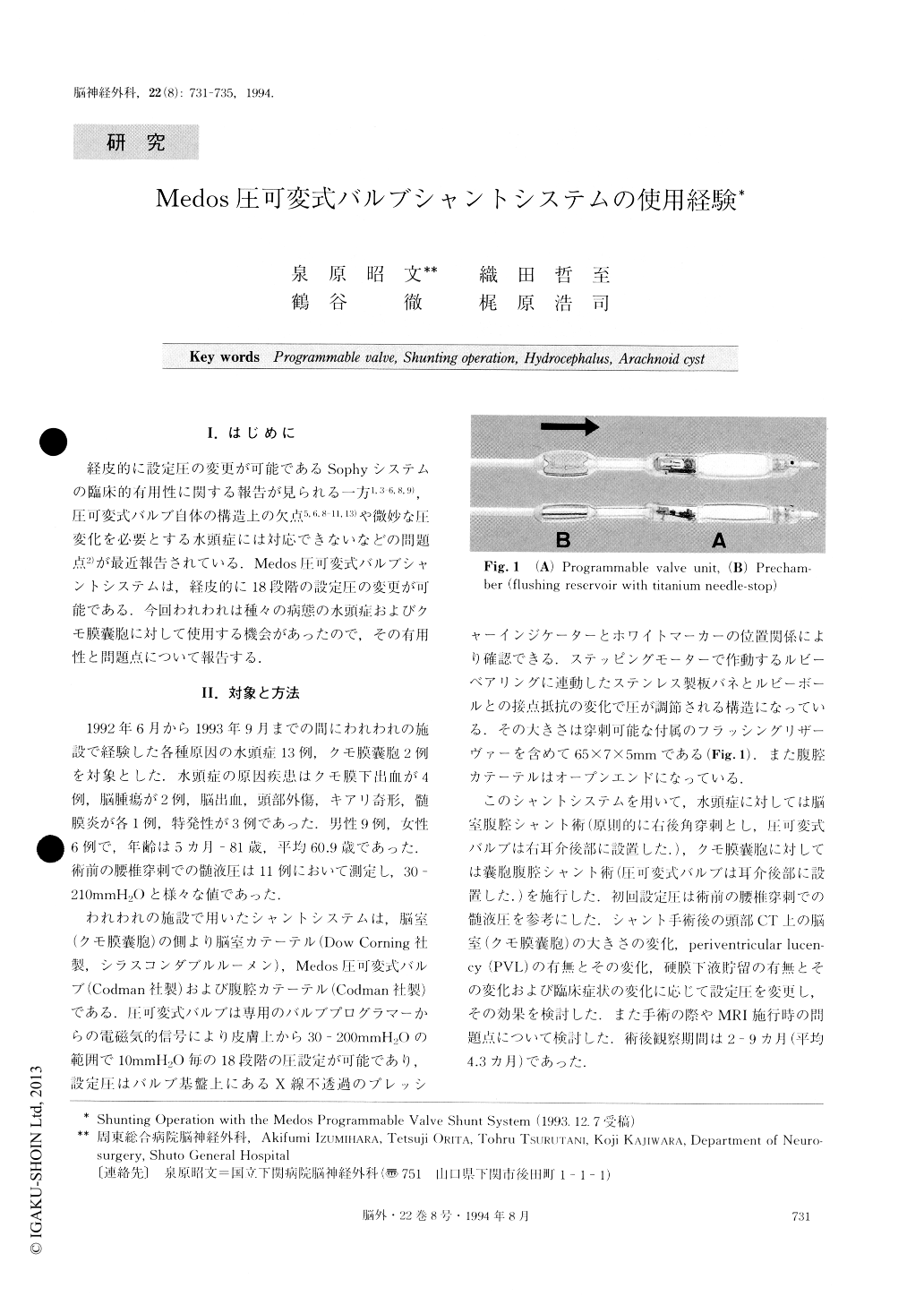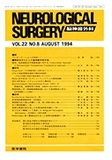Japanese
English
- 有料閲覧
- Abstract 文献概要
- 1ページ目 Look Inside
I.はじめに
経皮的に設定圧の変更が可能であるSophyシステムの臨床的有用性に関する報告が見られる一方1,3-6,8,9),圧可変式バルブ自体の構造上の欠点5,6,8-11,13)や微妙な圧変化を必要とする水頭症には対応できないなどの問題点2)が最近報告されている.Medos圧可変式バルブシャントシステムは,経皮的に18段階の設定圧の変更が可能である.今回われわれは種々の病態の水頭症およびクモ膜嚢胞に対して使用する機会があったので,その有用性と問題点について報告する.
We reviewed 13 patients with hydrocephalus of varied etiology and two patients with arachnoid cyst who underwent shunting operations using Medos pro-grammable valve shunt system. This shunt system allows 18 pressure settings, ranging from 30 to 200mmH2 in 10mmH2O differentials, percutaneously.
Following the shunting operation, the size of the ven-tricle or arachnoid cyst was reduced in all cases and the clinical symptoms improved in 14 cases. The valve pressure was reset during the postoperative course in all cases. In five cases, resetting was performed because of management of complications. In the others, it was performed to find the most appropriate valve pressure for each patient.
Complications were subdural effusion (2 cases), chronic subdural hematoma (2 cases) and slit ventricle syndrome (1 case). Subdural effusion and slit ventricle syndrome were improved easily by resetting the valve pressure, but both cases of chronic subdural hematoma finally required surgical treatment. Artifacts in MR imaging and movement of the valve pressure by MR imaging were small and created no cli-nical problem.
In cases 1 and 2, clinical symptoms and CT finding were improved by a change of 30mmH2O. In case 2, hydrocephalus with slight subdural effusion followed a good course with frequent change of the valve pres-sure. Accordingly, we consider the Medos system to be useful for a more thorough treatment of hydrocephalus and arachnoid cyst after shunting operations.

Copyright © 1994, Igaku-Shoin Ltd. All rights reserved.


